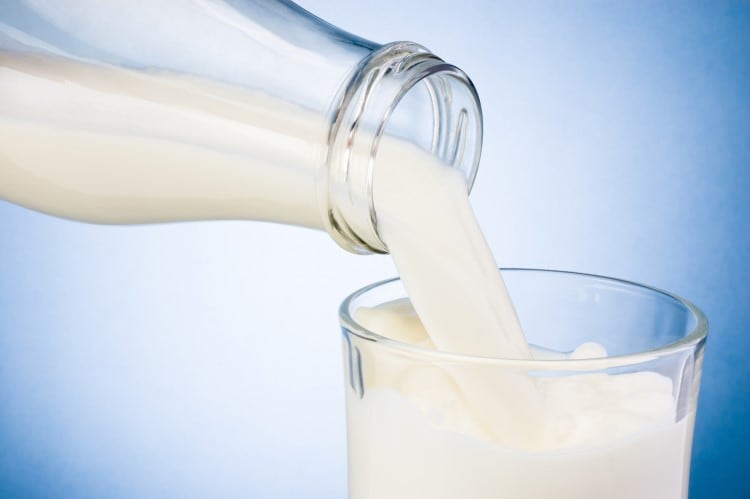The supplemental nutrition program, which targets low-income pregnant and postpartum women, infants and young children at nutritional risk, was used by 6.2m people each month during the 2021 fiscal year. According to the USDA, this group included 43% of all US infants and cost the federal government $5bn in total.
But the USDA has recently proposed to revise the amounts of some foods – including milk – supplied as part of the program. Controversially for the US dairy industry, the proposals include a reduction in the maximum monthly allowances of milk and the removal of cheese for breastfeeding participants.
The USDA says the proposals are in line with the program’s mission to provide a supplemental amount of food; they are science-based, and in line with the Dietary Guidelines for Americans (DGA). When it comes to dairy, the Women, Infants and Children (WIC) program currently provides 85-128% of the DGA recommendation, but in the new proposal, the amounts are lowered to 71-96%. At the same time, the department wants to lift the restriction on substitution amounts, allowing cheese, yogurt and tofu to be substituted more flexibly.
The milk cuts will save the federal government $136m over five years, but according to the International Dairy Foods Association (IDFA), they would also reduce access to essential nutrients for infants and adults alike.
“The USDA recently proposed to cut the amount of dairy provided through the WIC food package by up to six quarts per month, depending on the participant, with the largest reduction for pregnant and breastfeeding mothers,” the IDFA said. “According to a recent IDFA-Morning Consult poll, three-in-four WIC participants (76%) said they are concerned with the USDA proposal. One-third (35%) say they will need to use non-WIC funds to cover purchases of milk and dairy. One-quarter (26%) say the reduction will make their shopping for milk and dairy products harder.”
“At a time of rising food costs and high food insecurity, we should focus on increasing access to a wide variety of healthful, nutrient-dense, and affordable foods, including both fresh produce and dairy products. It’s disappointing that the proposed rule would limit WIC family purchasing power for nutritious dairy foods, particularly at a time like this.” - IDFA
Michelle Albee Matto, MPH, RDN, Senior Director, Regulatory Affairs and Nutrition at IDFA, told DairyReporter that even with the increase of substitution amounts, participants will receive less dairy overall.
“The proposed rule did propose some additional flexibility in container sizes and additional yogurt as a swap for milk. However, these flexibilities were still included within an overall milk/dairy package reduction, so no matter the flexibilities provided, there is still less milk, less dairy, and less nutrition provided, which is less than the recommended intake amount by the DGA.”
Matto also argued that removing cheese as a food category for fully breastfeeding participants in a bid to reduce saturated fat consumption was controversial. “Nutrition research has shown that the health effects of milkfat are not the same other saturated fats: consumption of full fat dairy products, including cheese, is associated with less risk of obesity, while not increasing the risk of cardiovascular disease.
“One recent study specifically examined the health effects of dairy-derived saturated fat in women, with women that consumed the most milkfat having lower BMIs, lower percent fat mass and larger LDL particle size.”
Matto added: “Removing 1lb of cheese each month removes 16 servings of dairy per month, and the important nutrients the WIC participants receive from them.
“Cheese also often serves as a key part of main dishes, especially meat-free options, so the reduction in cheese would also result in a loss of that function of cheese in the diets of children and women.” - Michelle Albee Matto, IDFA
The USDA is also exploring the feasibility of including dairy alternatives, such as plant-based beverages, to the program to accommodate ‘special dietary needs and cultural and personal preferences’. To that, Matto responded: “An important requirement for alternate products is that these provide similar levels of nutrients to the dairy products they would substitute for in the food packages. This would ensure that similar nutrition is being provided into the overall diet.”
Overall however, the dairy reductions are ‘nutritionally significant’ according to Matto, ‘representing a loss of 1/3 cup to 1 full cup of milk per day’. “Since each one-cup serving of milk provides 13 essential nutrients for children and women, including 30% of the recommended amount of calcium in each cup of milk, the nutrients lost by reducing the amount of milk is nutritionally significant.”
“These reductions result in an amount of milk provided that falls below DGA recommendations for a healthy diet.”
More worryingly, the proposed changes, if adopted, could negatively affect participation - an IDFA poll suggests that around 20% of participants may not enroll again, and more than a third are unsure whether they would re-enroll.
NMPF also ‘concerned’
Similarly to the IDFA, the National Milk Producers Federation has said it is ‘concerned’ about the reduced access to dairy through the program.
In a letter to the WIC Administration, Benefits, and Certification Branch, the body has said that milk, cheese and yogurt are in the top five redeemed foods in the WIC program and that access ‘should not be reduced in a program designed to serve the nutritional needs of participants at nutritional risk’.
The federation is, however, supportive of changes around requiring the authorization of lactose-free milk, increasing substitution amounts, allowing reduced-fat yogurts for young children restriction-free, and adding flexibilities for yogurt size containers, e.g. multipack yogurt containers, string cheese and drinkable yogurts.
“With the implementation of the above listed proposed changes, dairy’s health benefits will be available to all participants,” the federation claimed.
Sources:
Special Supplemental Nutrition Program for Women, Infants, and Children (WIC): Revisions in the WIC Food Packages
A Proposed Rule by the Food and Nutrition Service on 11/21/2022
www.federalregister.gov/documents/...children-wic-revisions-in-the-wic-food



